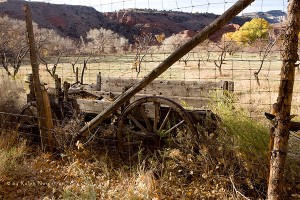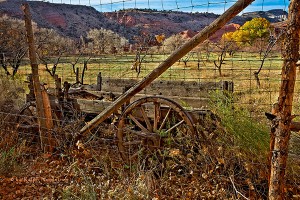How often do you hear that? People are on vacation, a family outing, a business trip even. And they see something that really moves them. So they whip out their camera, holed it up in front of their face, cock their head back a little, squint their eyes and ‘click.’ They get their picture.
But they’re often not satisfied and you hear them say, “This picture doesn’t show it like it really was.” And they’re a bit disappointed. They image they tried to capture lives only in their memories.
Those of us that are, what shall I say, serious about our photography often do varying amounts of post processing with our images. I don’t know how many times I start with a RAW image that is, well, not very interesting. It’s not what it looked like or, more to the point, it’s not the way it felt. But I remember the shot and how excited I was. So I start taking it through my work flow. That’s what I experienced tonight as I started working on an image of an apple orchard near Fruita, UT.

And as we progress, often times starting with the technical ‘shortcomings,’ the image begins to look more and more real, more like what we remember and what we felt. Maybe we pull down the highlights and open up the shadows. And maybe we adjust the white balance and the color saturation a bit. And lo and behold, the sky becomes more blue and the grass more vibrant and it begins to feel right – just like you remember it.
Then you start to apply some fine art considerations to it and maybe, just maybe end up with a work of art. So you print it, mat it, frame it, take it to a show and hang it proudly in your booth. And someone walks up and says, “Did you manipulate that photograph?”
I guess people aren’t used to seeing photographs that do “show it like it really was.”

(158)

Some situations ar very difficult to photograph, especially around mid day. This was one of them.
There is a multitude of color throughout southern Utah. Nice to see a photograph like it really was. Larry